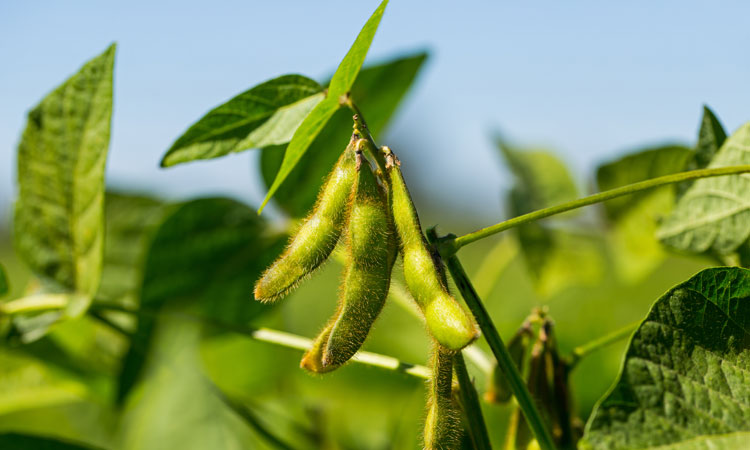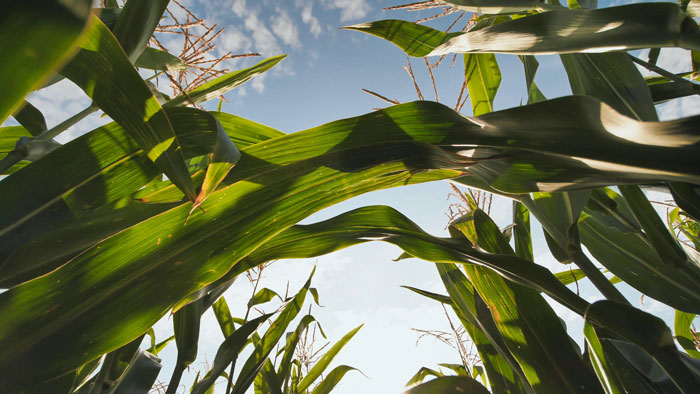Soy sits at the centre of a more circular economy
- Like
- Digg
- Del
- Tumblr
- VKontakte
- Buffer
- Love This
- Odnoklassniki
- Meneame
- Blogger
- Amazon
- Yahoo Mail
- Gmail
- AOL
- Newsvine
- HackerNews
- Evernote
- MySpace
- Mail.ru
- Viadeo
- Line
- Comments
- Yummly
- SMS
- Viber
- Telegram
- Subscribe
- Skype
- Facebook Messenger
- Kakao
- LiveJournal
- Yammer
- Edgar
- Fintel
- Mix
- Instapaper
- Copy Link
Posted: 1 February 2023 | Mac Marshall (United Soybean Board) | No comments yet
From deforestation and subsequent loss of biodiversity to greenhouse gas emissions, soya production gets bad press. Hear the other side of the story from Mac Marshall, as he asserts the benefits of soy cultivation, both for the global food chain and other industries.


Farmers drive advances in sustainability every single day as they seek to protect and preserve both precious farmland and the overall environment when producing the food, feed, fuel and other products that we all depend on.
Today, the positive impacts of agriculture and agricultural products stretch far beyond farm to fork. While supporting a safe and sustainable food supply remains a primary focus, every day we’re finding new ways to support more circular and sustainable systems in industries beyond the food supply chain.
These practices start on the farm, where efforts to grow more using fewer resources are contributing to global endeavours to reduce carbon in the atmosphere and lessen the impact of climate change. Additional benefits to sustainable farming practices and emerging opportunities like carbon capture programmes include new ways for farmers to realise benefits, not only for their own operations, but throughout the global economy.
From renewable, low-emission fuels to more sustainable trainers, and from tyres to the asphalt they ride on, plant-based options exist today, including new applications for soybeans!
At United Soybean Board, much of our work focuses on supporting farmers to adopt sustainable practices. However, we also advance research that aims to provide renewable options for an ever-widening array of products crossing virtually every industry. We also support a range of partnership and collaborations to help ensure that sustainable advances are shared and supported throughout the food value chain and beyond.
The broader impact of soy sustainability
U.S. Soy farmers are making strong strides in sustainable farming practices, continually improving harvests on roughly the same amount of farmland, even as they reduce the use of other precious natural resources. According to Field to Market’s 2021 National Indicators Report, between 1980 and 2020, US soy farmers improved production by 130 percent, while also improving:
- land use efficiency by 48 percent
- water use efficiency by 60 percent
- energy use efficiency by 46 percent
- greenhouse gas emissions efficiency by 43 percent
- soil conservation by acre by 34 percent.
U.S. Soy farmers achieved these advances by pioneering a range of best practices for farming, including cover crops, crop rotation (often rotating soy and corn crops) and conservation tillage. These practices proved over time to help boost yields, protect precious soil and the nutrients within it, optimise the use of water and other resources, and even capture carbon from the atmosphere.


U.S. Soy farmers pioneered a range of best practices for farming, including cover crops, crop rotation (often rotating soy and corn crops) and conservation tillage
By nature, these efforts alone provide environmental benefits both on and beyond the farm. But with the emerging practice of carbon offsets, farmers are also finding new opportunities to directly support other industries, even while realising new revenue streams. Essentially, sustainable farming practices like cover crops and no-till/low-till farming help trap more carbon in the soil, as opposed to the atmosphere, which is good for both the environment and the quality of the farmland. As technologies that accurately measure the carbon stored in farmland advance, that stored carbon can be supported by other industries looking to offset the impact of their own emissions.
Players in the industry are even advancing new cover crop varieties that may soon enable farmers to not only capture more carbon in soil with a second crop in the offseason, but also harvest that second crop for use as feedstock for low-emission biofuel production. This would provide another revenue opportunity for farmers alongside improving global sustainability on multiple fronts. This illustrates how improved sustainable, circular systems may be just around the corner.
Plant-based protein to help power the food supply
U.S. Soy provides high-quality protein that helps power our food supply at multiple levels, whether it is soy food or soy fed. U.S. Soy can show up on your plate in numerous forms and is the only plant protein comparable in quality to animal protein. Soybean oil, typically labelled merely as “vegetable oil,” can be easily added to dishes and may boost heart health, according to Soy Connection.1 It can help to boost the nutritional value of a dish, or take centre stage in the form of tofu or edamame as a great source of complete, plant-based protein.
However, the majority of U.S. Soy is your protein’s protein, supporting production of chicken, pork and fish to support food systems across the globe. U.S. Soy is the preferred protein and nutrient source in feed for the animals that also supply the animal protein we eat.
Approximately half of U.S. Soy supports domestic uses, with the other half exported for food systems around the world. In the US, more than half of U.S. Soy meal provides feed for chickens, with the rest providing feed for hogs and aquaculture.
Renewable alternatives for everyday products
There’s another side to U.S. Soy, and it’s getting a tremendous amount of attention these days. Crushed soybeans produce two primary products in oil and meal, which are used for different purposes. Soybean oil provides an ideal feedstock for biofuel, which has created a spike in demand, but there are other surprising uses for the oil too.
In many cases, soy oil is a more renewable and climate-friendly alternative to fossil fuels and toxic chemicals like formaldehyde. Biodiesel, for example, provides a renewable fuel source that also cuts greenhouse emissions over its lifecycle by 74 percent on average when compared with fossil fuels, according to Clean Fuels Alliance America. U.S. Soy also yields renewable alternatives to petroleum and harmful chemicals found in plastic, paints, adhesives and other products – even shoe soles and tyres.
Each of these products creates a more circular system. Even better is these products are produced with soy oil, even as the meal continues to be used as feed to support a healthy food system. It’s not an either-or proposition. We can do both with the same bean. Each gallon of biofuel requires about seven pounds of soybean oil, and the meal produced from those very same beans also provides feed for 30 pounds of poultry.
As we look to the future and the demand for U.S. Soy oil increases, additional soybean crushing will also introduce more high-quality soybean meal for protein production that can help support the nutritional needs of our growing global population.
The future of sustainable farming
We’ve made big strides, but we see plenty of runway ahead for advancing agriculture’s pivotal role in sustainability. U.S. Soy drives rapid advancement in innovative food production methods, for example aquaculture, where new systems enable highly efficient production of seafood and even the byproducts can be used to support crops. An increasing number of U.S. Soy farmers today provide comprehensive sourcing to enable the broader food system to track and confirm sustainable practices from farm to fork. And we’re making continual progress in research to identify yet more new areas where soy and other agricultural products can be used to replace less sustainable alternatives.
Just as farmers follow the circular pattern of the calendar each year, always looking to meet the global food supply demand throughout each season, they are also supporting a broader, more circular economy in both well-known and surprising new ways. You can expect more progress – and more pleasant surprises – in the years to come.
About the author
Mac Marshall, Vice President of Market Intelligence, United Soybean Board and United States Soybean Export Council.
References
- https://www.soyconnection.com/resources/health-nutrition-newsletter/newsletter-article-list/qualified-health-claim-for-soy-oil-allowed-by-the-food-and-drug-admin
Related topics
Environment, Fats & oils, Ingredients, New product development (NPD), Plant based, Proteins & alternative proteins, Research & development, Sustainability, Technology & Innovation, Trade & Economy, World Food
Related organisations
Clean Fuels Alliance America, Field to Market, Soy Connection, U.S. Soy, United Soybean Board (USB)









